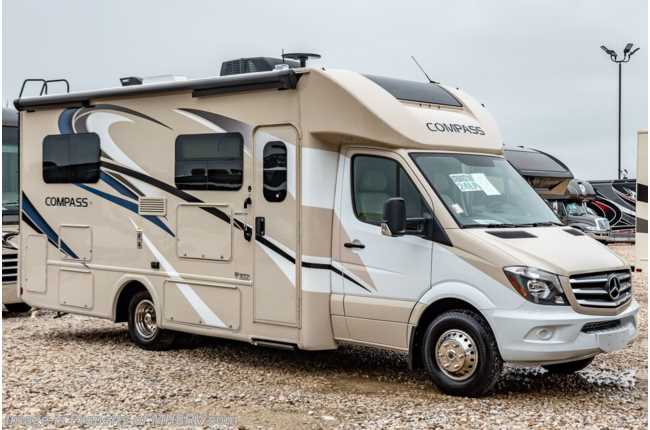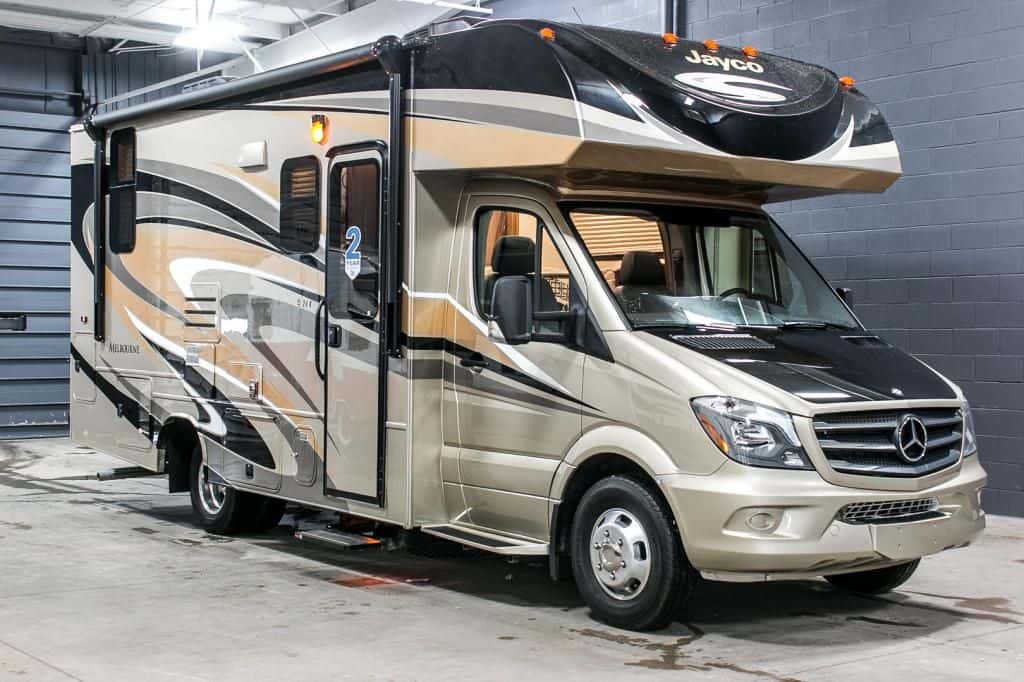Last Updated on September 26, 2023 by
Motorhomes are one great source of joy when you want to travel to picnic spots and camp for the night. These RVs provide living space inside with a warm and comfortable interior where you can keep your luggage and equipment safe and sound with you.
There is a great difference of choice between the people who want to choose a motorhome for their families.
Generally, Class B and Class C RVs are chosen because of their ideal size and weight. Both of these types of RVs are very useful for long trips out in the wild. In case you want to get a new RV for your family to make trips to different places, then you might want to choose between a class B RV or a class C RV.
This is the reason we have shared a full comparison between these two full-time living RVs. So let’s see the differences between class B and class C motorhomes.
What is a Class B RV?
Class B RVs are intended to be minimized and simple to explore. Most Class B RVs range from 18 to 25 feet long. They’re also known as camper vans that can be taken down in a narrow street or through the city area without worrying about traffic. While not all Class B RVs are based on a van suspension, large numbers of them are.
These more modest campers can be effectively parked inside almost any parking spot and don’t need a unique garage to store them. Class B RVs are frequently picked by solo voyagers, couples, and individuals who wish to take time out to explore the world themselves.
Class B RV Features
Despite the fact that they are small in size, Class B RVs actually pack in the conveniences. When looking for Class B RVs, you can search for these convenience choices:
- A kitchenette.
- Rough terrain abilities, like 4×4 or modified trail tires.
- A resting space with the convertible option has a divider to let loose space.
- A little feasting region.
- Solar power arrangement for boondocking.
- A small bathroom.
- Extra room.
Class B RVs are an optimal pick for one to two voyagers. They are a magnificent decision for the individuals who wish to visit more diligently to get to camping areas or camping areas with severe impediments on vehicle sizes.
A Class B RV probably won’t highlight the advantage of Class A; however, it compensates for it in adaptability and simple mobility. The specific conveniences found in a Class B camper differ enormously depending on the size of the frame and the manufacturer.
Camping Gear SALE!
We have teamed up with Ape Survival to give you a huge 25% off EVERYTHING on their store! They have camping gear, hiking gear, survival gear and much more, all at 25% off when you click the link below.
SHOP NOWIf you are looking for the Best and High-Quality Class B RV, then check this article.
What is a Class C RV?
Class C RVs are luxurious and extravagant like class A motorhomes but smaller in size. They share the features of both Class A and Class B motorhomes. Normally these RVs range somewhere 21 to 41 feet in length and offer a tad of both RV styles. These RVs are simpler to move than a Class A however offer a couple of a bigger number of conveniences and space than a Class B.
Much of the time, a Class C RV is furnished with extra slide-outs that include additional dozing space, making them an incredible fit for families.
Class C RV Features
A Class C RV has sufficient room to provide a resting place for everyone. There are some common features that you will get inside these RVs.
- A full restroom
- A slide-out deck
- A devoted eating region
- Wardrobes and extra room
- A full kitchen
- Outside capacity
- Different sleeping spaces
- An implicit canopy
- Additional seating for travelers
Class C RVs are an extraordinary selection for friends and families who need more space than a camper van and don’t want something as big as Class A RV. Class C RVs are permitted in many campsites and can deal with a great deal of the very streets that a Class B can tackle. These RVs are an optimal mix of conveniences and further developed with eco-friendliness.
If you are interested in Class C RVs then check out this article on the Top Class C RVs available in the market.
Advantages of Class B Motorhomes
Class B RVs are not difficult to drive. They will fit in many carports and may serve as a second family vehicle if necessary. These RVs get the best gas mileage and can squeeze into the most impenetrable of camping areas absent a lot of exertion.
The expansion of a tow hitch makes it conceivable to bring along the family boat or a little trailer. Class B RVs are most appropriate for two individuals. A portion of the bigger models have transformations to change over the cab seats into beds.
Disadvantages of Class C Motorhomes
Capacity is insignificant, both inside the lodge and in spaces at the edges of the RV. If four individuals are traveling inside these motorhomes for a long time, they can have a bit of a problem. The washrooms are minuscule, with the shower and latrine in a similar space.
Advantages of Class C Motorhomes
Class C RVs are mostly preferred by the customers as they have an extra entry into the RV lodge. Class C RVs are genuinely simple to deal with. They drive like a van or truck. The accessible space for the two individuals and their features makes Class C appropriate for long get-aways and setting up camp outings. The bigger truck engine and more grounded body give capacity for towing a boat or other vehicle.
Camping Gear SALE!
We have teamed up with Ape Survival to give you a huge 25% off EVERYTHING on their store! They have camping gear, hiking gear, survival gear and much more, all at 25% off when you click the link below.
SHOP NOWDisadvantages of Class C Motorhomes
On the disadvantage, that bigger engine and extra weight mean the Class Cs are not as eco-friendly as Class Bs. The stature, further expanded by roof climate control systems, satellite dishes and vents, and length, implies they will not generally fit in the carport.
A few urban communities have limitations against stopping RVs on your property, so they should be put away somewhere else. The stature and length of some Class Cs imply restricted access to certain campgrounds.
Class B+ – The Hybrid
There is a crossover between the Class B and the Class C RV motorhome that is called the Class B Plus Motorhome category. They have improved gas mileage than Class C yet have more storage and space than Class B. They are based on a truck case, and there is a cab over, yet it is more streamlined and not as high.
The cab-over, as a rule, houses extra room or a diversion place rather than a bed. The restroom is more in accordance with those in Class C.
The Class B Plus models, generally restricted to 30 feet long, can squeeze into most National Park setting up camp spots. Contingent upon the model you pick, this RV could conceivably fit in your carport.
Floorplans of these models come with beds for the back or couch beds as an afterthought, both with a different dinette that normally changes over into a bed. Slides are common in these motorhomes.
If you are interested then check out this comparison on Class A vs Class C RV.
Conclusion
This was a comparison of Class B and Class C motorhomes. We hope you find it useful, and you can use the FAQ section for further information.
FAQ
Which one to choose, Class B or Class C motorhome?
If you consider a compact and eco-friendly RV with limited space, go for class B motorhomes. If you want wide space with ideal size, choose class C motorhomes.
Table of Contents


